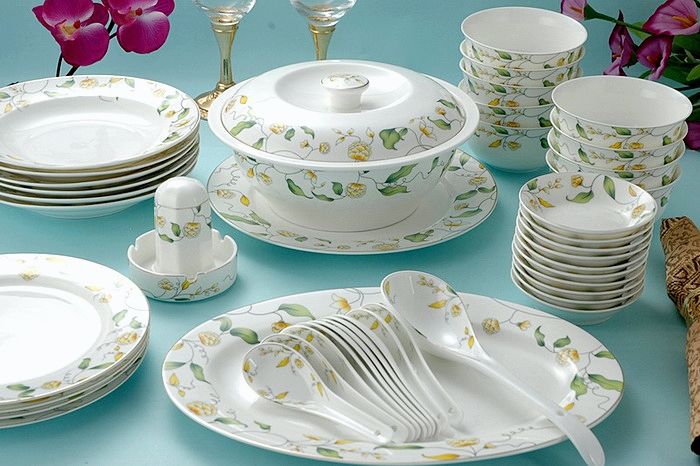
If you have ever held a piece of bone china you will have noticed primarily that it has a beautiful translucent quality - when holding it up to the light it is possible to see the shadow of your hand as you hold it behind the bone china. There is a fineness and delicacy about it that belies its strength; it is harder to chip than one might imagine, making it perhaps surprisingly durable; however it is wise to take care when handling fine bone china as it would be heart-breaking to spoil your treasured pieces. It's probably a good idea to wash bone china by hand.
History of Bone China
Bone china has an interesting history. Thomas Frye had a porcelain factory in Bow, London's East End, in 1748 which was near to the cattle markets and slaughterhouses of those days. He began using bone ash from the slaughtered cattle bones as part of the ingredients needed to make what he called 'fine porcelain'. The use of up to 45% bone ash produced items of very good quality, but the venture itself was not a commercial success. In the later 1700's Josiah Spode in his factory in Stoke-on-Trent, England developed the use of bone ash when making porcelain and came up with a formula that proved to be extremely successful in both popularity and business terms for many, many years to come. The raw materials for bone china and the processes involved in its making are expensive which is why fine bone china is a more high-end of the market item.
Fine Porcelain China
What is Porcelain?
Porcelain is a ceramic material resulting from heating materials at high temperatures. It's a collective term for ceramic products that is white and translucent. Porcelain is frequently used to make pottery, vases and tea ware. Porcelain tea sets, tea pots and tea cups have been a popular gifts in the higher ranks of imperial China. It's mainly made from the following materials: Kaolin (a type of clay), pottery stone, feldspar, and quartz.
Porcelain Classification
In China, two methods were developed in history: high-temperature fired (cí) and low temperature fired (táo). Besides production methods, Chinese fine porcelain can also be categorised as 'northern' or 'southern' porcelain. Due to geological differences between North and South of the Yangtze river, ceramic porcelain produced consists of different raw materials.
Bone China and Porcelain Difference
If you are unsure of the difference between porcelain and bone china, these pointers may clarify things for you. Although the finish of porcelain is harder it is also more brittle due to the required hotter firing temperatures. Porcelain can be moulded into more varied shapes due to its composition. Bone china has a fine, delicate appearance due to its renowned white translucency which comes from its bone ash composition.
Which one is better?: when it comes to drinking experience both of them don't affect the flavor of your tea. And when it comes to heat retention, they're also doing equally well. So answering the question regarding which one is better is just a personal matter of taste.